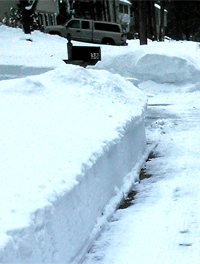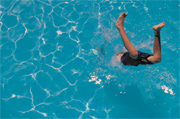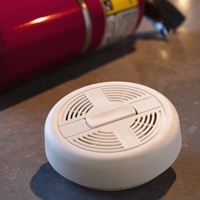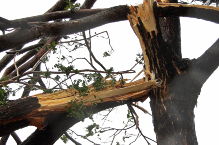Posts Tagged ‘“Boston personal injury lawyers”’
Travel Safe in Boston After Blizzard of 2013
 After a snow storm that buried Massachusetts with record-setting strength, many of us are slowly making our way back to our daily routines.
After a snow storm that buried Massachusetts with record-setting strength, many of us are slowly making our way back to our daily routines.
Massive snow banks, narrow roads and giant icicles are now the challenge. Governor Deval Patrick has lifted the weekend’s driving ban, but the State of Emergency remained in effect this morning. Many schools cancelled classes for another day and Boston Mayor Tom Menino encouraged businesses to let their employees work from home today.
Our tips for staying safe and avoiding injuries as you travel:
Community Websites. Check your community website for information about snow plowing and closed streets, as well as power outages and school closures.
Public Transportation. Use the MBTA if you are traveling into Boston. Mayor Menino is urging the public to stay off the roads to make room for cleanup.
Store and Pharmacy. Choose merchants close to home if you are heading out to restock up on food, medications and other supplies. Travel in daylight if possible.
Pedestrians Use Caution. Stay indoors today. Over the next few weeks, limit outdoor walks until the snow melts. If you must walk, wear a neon-colored vest.
Drivers. If you do drive, beware of the tall snowbanks and avoid roads which may not be fully cleared. Remember some roads may not have enough space for two-lane traffic.
Parking. Call ahead to ask about parking, even to your employer. Parking may not be available or be limited. Looking for spaces can lead to frustration among drivers and car accidents.
Gasoline and Vehicle Supplies. Keep your gas tank full over the next few days and equip your car with supplies such as a first aid kit, snow brush, small shovel, blanket and an extra hat and pair of mittens.
Take a Minute. Driving in these conditions can be stressful and accidents can occur. If you find yourself in a dangerous situation, pull over at your earliest opportunity. Take a minute to think about your options and if necessary, call the local police or fire department on their non-emergency line and ask for their direction.
Related:
Massachusetts Emergency Management Agency App.
Portable Generator Tips for Hurricane Sandy
As Hurricane Sandy moved toward Massachusetts this weekend, many people purchased portable power generators. This equipment is an inexpensive way to find comfort during a power outage, but it is important to remember the potential safety hazards when not used properly.
The most frequent danger associated with portable generators is carbon monoxide poisoning, which can result from a leak or misplacement of a power generator in a house or garage where gas can accumulate. Carbon monoxide is a colorless, odorless and tasteless gas and poisoning can occur without warning. Symptoms often start with headaches and dizziness, but can quickly advance to seizures, coma and death.
If you have purchased a portable generator for the storm, the lawyers at Breakstone, White & Gluck offer these tips for safe use against carbon monoxide poisoning, as well as burns and electrocution:
Use your portable generator outside. Set it up away from your home’s doors, windows and vent openings.
Never use a portable generator inside your home. Also do not use it in an attached garage, even in a garage with an open door.
Check your carbon monoxide detector. Make sure the detector and batteries are working. Follow the manufacturer’s instructions for placement as well as state law, which in most cases requires residences to have carbon monoxide detectors on every habitable level of the home or dwelling unit. Check if your portable generator manufacturer offers additional instructions.
Make sure there is a safe connection. Take time to learn the proper way to connect the portable generator to your appliances.
Refuel safely. Turn off your portable generator and let it cool before refueling and turning it back on.
Fuel storage. Store your portable generator fuel in a clearly marked container. Store it outside living areas.
Read the manufacturer’s instructions. These instructions should provide details about how you can expect the device to operate during the critical storm conditions.
No backfeeding. Never try to power the house by “backfeeding”, the practice of plugging the generator directly into a wall unit or household wiring. This creates an electrocution risk to yourself as well as neighbors and utility workers using the same utility transformer. It also bypasses some of the built-in household circuit protection devices.
Do not operate in the rain or wet conditions. You may have purchased a portable generator to make it through the storm, but you should only operate the generator in dry conditions. If you must operate in wet conditions, the Consumer Product Safety Commission (CPSC) recommends placing it under an “open, canopy-like structure on a dry surface.”
Related:
Portable Generator Hazards, Consumer Product Safety Commission.
MEMA offers tips as Hurrican Sandy approaches, Massachusetts Emergency Management Agency (MEMA).
Read More
Drownings Claim 90 Children in U.S. Since Memorial Day
 The Consumer Product Safety Commission (CPSC) reports pool drownings have claimed the lives of 90 children in the U.S. since Memorial Day, a sober reminder for parents and caregivers to review how they are protecting their youth.
The Consumer Product Safety Commission (CPSC) reports pool drownings have claimed the lives of 90 children in the U.S. since Memorial Day, a sober reminder for parents and caregivers to review how they are protecting their youth.
These figures were released for Pool Safely Day, an event being observed nationwide this week, from July 22 to July 29, 2012. In Massachusetts, the South Shore YMCA in Quincy and the Boys & Girls Club of Taunton were scheduled to host educational events.
The CPSC reported 90 children under age 15 have suffered swimming pool drownings and an additional 106 children in the same age category have required emergency response for near-drowning incidents at pools. The figures were released by the CPSC’s Pool Safely: Simple Steps Save Lives campaign.
The figures show younger children are most vulnerable, with 72 percent of the drowning victims younger than 5 years old.
Texas saw 13 drownings, the highest number nationwide through the mid-summer report, with California, New York, North Carolina, Ohio and Pennsylvania each reporting 5 swimming pool drownings.
Parents should make sure their children have taken swimming lessons and instruct them on ways to protect themselves, such as to stay away from pool drains, pipes and other openings; stay in certain areas of the pool and only use diving boards after asking parents. Children 13 and older should also be trained in CPR.
Parents and caregivers should also:
- Stay close and alert when watching children in and around the pool.
- Never leave children unattended.
- Learn CPR.
- If you own a pool or spa, make sure it has appropriate safety equipment. At pools, that includes fencing, a lockable safety cover, drain covers which match federal requirements, life rings and a reaching pool. Spas should have lockable covers for when not in use.
Click here for a full list of pool safety tips from the Boston personal injury lawyers at Breakstone, White & Gluck of Massachusetts.
Related:
- Midsummer Drowning Checkup: 90 Child Drownings Nationwide since Memorial Day, Consumer Product Safety Commission.
- Swimming Pool Accidents, Breakstone, White & Gluck.
- Pool Safely website.
- Virginia Graeme Baker Pool & Spa Safety Act, Pool Safely.
Swimming Pool Accidents Can Be Avoided By Owners’ Safety Steps
 With the warm weather and pool season upon us, we wanted to take a moment to discuss important pool safety precautions to prevent injuries and drowning.
With the warm weather and pool season upon us, we wanted to take a moment to discuss important pool safety precautions to prevent injuries and drowning.
A swimming pool holds many risks for injuries, from defective equipment to unsecured locks. The biggest hazard, of course, is drowning. Drowning is the leading cause of death for young children ages 1 to 4 in the U.S. and the fifth leading cause of unintentional injury death for people of all ages. In children under 15, non-fatal drowning is more common than drowning. Non-fatal drowning happens when the brain loses oxygen due to submersion. This can cause brain damage and long-term disabilities.
In many cases, drowning and other pool-side injuries can be prevented if everyone using your pool is closely monitored at all times and your equipment complies with safety guidelines. The Boston personal injury lawyers at Breakstone, White & Gluck share these tips for pool owners:
Fencing. Residential pools must be secured by a fence at least four-feet tall. More than half of all swimming pool drownings among young children could be prevented by four-sided fencing that separates the pool from the house and yard. The fence should have self-closing and self-latching gates that open outward.
If your house serves as a fourth side of a fence around a pool, install door alarms and always use them.
Pool Alarms. Install pool and gate alarms to alert you when children go near your pool.
Drain Entrapments. Keep children away from drains, pipes and other openings to avoid entrapments. Purchase drain covers that comply with the Virginia Graeme Baker Pool & Spa Safety Act. The federal law covers pools which are open to the public, apartment complexes and hotels, but you can purchase these covers for your residential pool. Ask your local pool supplier or visit PoolSafely.gov.
Diving Boards. Never install a diving board for an above-ground pool. If you install one on your in-ground pool, make sure the water is at least 10 to 12 feet deep. Diving is a leading cause of neck and spinal cord injuries. Check with your insurance agent or insurance broker to see if any special precautions are required under your homeowners insurance policy.
Pool Inspection. Call your pool dealer or local board of health and ask for the name of a pool safety inspector.
Telephone. Always keep a telephone outside near the pool in case of emergency.
Glass. Never allow glass in or near the pool. Broken glass is dangerous in the area around the pool, but even more dangerous in the pool itself where it can be completely invisible. We know from the cases that we have handled that broken glass in a pool can lead to serious personal injuries.
Watch Children Swim. Always make sure someone is watching children swim. Assign at least one adult to the task of watching the children.
Read More
SJC: Personal Injury Case May Proceed Against City of Newton
 The Massachusetts Supreme Judicial Court has rejected an appeal by the City of Newton which attempted to claim an exemption from liability for personal injuries suffered by a softball player on one of its fields. The City claimed it was exempt from liability under the Recreational Use Statute, but the court ruled the statute did not apply.
The Massachusetts Supreme Judicial Court has rejected an appeal by the City of Newton which attempted to claim an exemption from liability for personal injuries suffered by a softball player on one of its fields. The City claimed it was exempt from liability under the Recreational Use Statute, but the court ruled the statute did not apply.
The plaintiff in the case was a paying member of a softball league in Newton. While at a game one day in July, 2007, he was sitting in a grassy area, waiting for his turn at bat and watching the game. He heard a cracking sound, and turned to see a tree falling on him. He could not escape the falling tree, and suffered injuries to his back, shoulder blades, and other parts of his body.
The name of the case discussed is Marcus v. City of Newton, 462 Mass. 148 (2012), and was decided on May 7, 2012.
Click here to read our case summary and for a link to the opinion.
Read More
Elevator Accident in New York City Leads to Firings, Suspensions
 A new report on a New York City elevator accident highlights the importance of safety on elevators, escalators and other equipment that transports the public.
A new report on a New York City elevator accident highlights the importance of safety on elevators, escalators and other equipment that transports the public.
While many elevators and escalators are used daily by large numbers of people, they pose a risk for injury when they are not properly maintained. The responsibility falls on manufacturers to produce safe products and building owners, management companies and city and state inspection officials to ensure machinery is kept up to code.
Elevator and escalator injuries and deaths are more common than the public may know. Each year, elevator accidents result in about 10,200 injuries and 27 deaths in the U.S. Escalator accidents result in about 17,000 injuries and 30 deaths.
One tragic case recently occurred in Massachusetts. In March 2011, a 4-year-old boy was killed after an escalator accident in the Sears at the Auburn Mall, near Worcester. The child was standing on the store’s second floor when he grabbed the moving down rail of the escalator and was pulled through a gap between the Plexiglas divider and the escalator. He fell 18 feet onto a display case.
Investigators later learned that the gap between the Plexiglas and the elevator was 1-1/4 inch greater than code. After an investigation, two state escalator inspectors were fired, six were suspended and 26 others were reprimanded.
In December 2011, two women lost their lives in separate elevator accidents. On December 9 in California, a 48-year-old woman was killed on an elevator accident at Cal State Long Beach. She was killed when the elevator got stuck between the second and third floors and someone tried to help her escape. A 2000-pound car crashed down on her.
Just five days later in New York City, a 41-year-old advertising executive was killed in an elevator accident in a Midtown Manhattan office tower. The woman was killed after she stepped into an elevator which suddenly lurched upward with the doors still open. She was pinned to an elevator shaft between the first and second floor and pronounced dead at the scene. Two other people who were trapped in the elevator were rescued and treated for trauma.
The city released results of the investigation into the woman’s death this week, finding that a maintenance crew had been repairing the elevator and utilized a special jump wire to bypass the elevator’s safety system nine minutes before the woman’s death. They then accidentally left it in place.
The investigation also found two other violations. First, the elevator repair crew never posted a warning that work was being performed. Second, the crew never called the city’s Buildings Department before putting the elevator back in service.
The city has suspended the license of the company from performing maintenance, Transel, which services 2,500 elevators in New York City. The company has fired five mechanics.
Related:
- Transel Elevator Fires 5 After Report on Elevator Death, The Associated Press.
- Escalator fall leads to firings, suspensions, Worcester Telegram.
Change Your Smoke Alarm Batteries for Daylight Saving Time
 On Sunday, Nov. 6, we turn clocks back an hour as Daylight Saving Time ends. The change from Daylight Saving Time is an important reminder to protect our family and homes by checking and changing the batteries in our smoke alarms and carbon monoxide detectors.
On Sunday, Nov. 6, we turn clocks back an hour as Daylight Saving Time ends. The change from Daylight Saving Time is an important reminder to protect our family and homes by checking and changing the batteries in our smoke alarms and carbon monoxide detectors.
Fire and carbon monoxide poisoning are great concerns as the cold weather arrives and residents make their home heating decisions. Each year, more than 150 people in the United States die from accidental non-fire related carbon monoxide (CO) poisoning. This poisoning is associated with consumer products, such as furnaces, stoves and water heaters.
Even more people die each year in fires. In 2010, 3,120 people were killed while another 17,720 suffered fire-related injuries, according to the National Fire Protection Association. Four out of five civilian fire deaths occurred in the home. These statistics make your work to prepare your home for the winter especially important.
Smoke Alarms: Massachusetts requires a smoke alarm be installed on every habitable level of a residence as well as the basement floor.
There are two types of smoke alarms, photoelectric and ionization. Effective April 5, 2010, only photoelectric smoke detectors are to be installed within 20 feet of kitchens and bathrooms with showers. These alarms are less sensitive and the goal is to reduce nuisance alarms that cause people to disable devices. Both photoelectric and ionization alarms are required in all other areas.
Carbon Monoxide Detectors: Since March 31, 2006, residences have been required to have working carbon monoxide alarms on every habitable level of the home or dwelling unit. Carbon monoxide is a colorless and odorless gas that results from incomplete burning of fuels. The first symptoms of poisoning are similar to the flu and include headache, fatigue and dizziness.
The requirements for meeting the smoke alarm and carbon monoxide detector laws can be met with separate units or with smoke alarms that have carbon monoxide detectors.
Read More
Halloween Safety and a Warning About One Candy
 Halloween is a much-anticipated night for children across Massachusetts, who are excited about dressing up as ghosts and goblins, going trick-or-treating and attending costume parties. Parents have a responsibility to protect children by talking to them beforehand about appropriate behavior and dangers to avoid. Here, the Massachusetts personal injury attorneys at Breakstone, White & Gluck of Boston offer tips to help parents and all adults keep the Halloween experience safe and fun for our youth:
Halloween is a much-anticipated night for children across Massachusetts, who are excited about dressing up as ghosts and goblins, going trick-or-treating and attending costume parties. Parents have a responsibility to protect children by talking to them beforehand about appropriate behavior and dangers to avoid. Here, the Massachusetts personal injury attorneys at Breakstone, White & Gluck of Boston offer tips to help parents and all adults keep the Halloween experience safe and fun for our youth:
- Never let young children go trick-or-treating without adult supervision.
- Take children for a test run of the trick-or-treat walking route during daytime hours.
- Remind children to look both ways before crossing the street and to utilize crosswalks when possible.
- Parents and children should always walk on sidewalks.
- Children should carry flashlights or glow sticks and wear reflective tape.
- Watch out for trick-or-treaters! Drive below the speed limit in residential areas and do not pass stopped vehicles in the roadway.
- Inspect treats before consumption. Discard all homemade goods and candy that poses a choking hazard.
- At your home, leave candles, pumpkins and lanterns in a place where no one can trip and injure themselves.
- Make sure costumes are flame-resistant and will not cause children to fall or trip.
- Click here for information on safe costumes from the Consumer Product Safety Commission.
A New Warning About One Type of Halloween Candy
A new government warning issued this week caught many by surprise as families prepare for Halloween. The Food and Drug Administration (FDA) reported there is a link between black licorice and an irregular hearth rhythm. If you’re 40 or older, eating two ounces of black licorice a day for at least two weeks could land you in the hospital with an irregular heart rhythm or arrhythmia.
The FDA says black licorice contains the compound glyrrhizin, which can cause the body’s potassium levels to fall. This can trigger abnormal heart rhythms, high blood pressure, edema, lethargy and congestive heart failure.
The good news? Licorice lovers can enjoy their candy in moderation. And if you have ever enjoyed too much licorice and experienced health problems, they are unlikely to reoccur unless you once again eat more than the recommended licorice limit. The FDA says all health complications end when black licorice consumption stops.
Click here for more information about the FDA’s Oct. 25, 2011 warning about black licorice.
Read More
Protecting Massachusetts Students Heading Back to School
 There is much to plan as students return to school each September. Buying new school supplies and clothes often makes the top of the to-do list, but even more important is planning how your child will travel to and from school safely.
There is much to plan as students return to school each September. Buying new school supplies and clothes often makes the top of the to-do list, but even more important is planning how your child will travel to and from school safely.
Approximately 17,000 children are sent to U.S. emergency rooms each year in school bus accidents, according to a 2006 report in the journal Pediatrics. Some 42 percent of student bus accident injuries and deaths result from crashes. But nearly 25 percent of school bus injuries occur during the everyday activity of boarding and stepping down from the bus.
There are many ways students travel to school: the school bus, parent car pools, walking and bicycling. All of these carry a risk for injuries and accidents – but this can be greatly reduced when drivers and students follow the rules of safety. Here the Boston personal injury lawyers at Breakstone, White & Gluck offer parents tips to keep their children safe:
Avoiding School Bus Accidents:
- Most Massachusetts school districts do not have seat belts on school buses, but if yours does, explain the importance of wearing one to your child.
- Instruct your child to wait until the bus is completely stopped before trying to board or exit.
- Tell your child to stand at least six feet back from the curb as the bus approaches.
- Explain to children they should never cross the street behind a bus because it may result in a pedestrian accident.
- Wait at the bus stop with young children. If you cannot do this every day, ask another parent to share the responsibility with you.
Avoiding Student Pedestrian Accidents:
- If possible, walk to school with your child. Arrange a neighborhood school walk and have parents take turns supervising.
- If your child is walking alone, explain that he or she must cross the street in the crosswalk under the supervision of a school crossing guard.
- Have your child wear bright colored clothing to avoid car accidents.
Avoiding Student Carpool Accidents:
- All children should wear seat belts. In Massachusetts, children ages five to seven or up to 4’9″ tall are required to travel in a child safety seat.
- Children under the age of 13 should ride in the back seat.
- Explain to children they should talk softly and let the driver concentrate on the road.
Avoiding Student Bicycle Accidents:
- In Massachusetts, children and teens age 16 and under are required to wear bike helmets.
- Do not allow young children to bicycle to school.
- Make sure your child has the appropriate experience on a bicycle and is familiar with traveling the route to school.
- Teach children to ride in the same direction as traffic on the right side of the road.
- Children and teens bicycling to school should wear bright colored clothing.
Massachusetts Safety Tips After Tropical Storm Irene
 Now that Tropical Storm Irene has passed, residents and businesses throughout Massachusetts have started the extensive clean-up. Many remain without power.
Now that Tropical Storm Irene has passed, residents and businesses throughout Massachusetts have started the extensive clean-up. Many remain without power.
An estimated 4.5 million homes and businesses along the East Coast lost power, including 700,000 in Massachusetts, officials reported. Utility and state officials estimate it may take several days to restore power in some communities.
The storm caused 26 deaths across the country. In Massachusetts, a public works employee on his way to join recovery efforts was electrocuted Monday by a downed power line outside his Southbridge home.
From Storrow Drive in Boston to Interstate 91 in western Massachusetts, many roads were shut down by flooding. Residents in several communities were evacuated from their homes, including in several western Massachusetts towns, Southboro and New Bedford,
Whether you are cleaning up your yard, driving or waiting for power to be restored, it is essential to think safety for you, your family and property. Here are safety tips from the Boston personal injury lawyers at Breakstone, White & Gluck:
- Be prepared for intersections without working traffic lights or police officers to direct cars.
- When driving, travel farther behind the vehicle in front of you than normal. Road detours and single-lane roads may not be visible until just before you reach them.
- Give even more room when traveling behind tractor trailers carrying heavy loads of branches and storm debris.
- If your home is still without power, make sure you have enough flashlights and plenty of extra batteries. Avoid using candles.
- Natural gas or propane valves that have been under water should be replaced. Smell and listen for leaky gas connections that may trigger an explosion.
- If you believe there has been a gas leak, there is risk for a home explosion. Immediately leave the house, leave the doors open and contact a gas system professional before you return.
- Take measures to avoid food poisoning. Throw away any refrigerated foods that are held at above 40 degrees for more than two hours. Food can generally keep for up to 4 hours in a refrigerator that is not opened and between 24 to 48 hours in a freezer.
- Watch news reports to see if your local health department has cleared tap water for safe consumption. If you are without power and cannot watch television or access the Internet, call your town or city hall to ask.
- Watch out for and stay away from downed power lines.
- Do not enter and avoid walking near damaged buildings.
- Be careful walking under trees as there may be loose branches.

